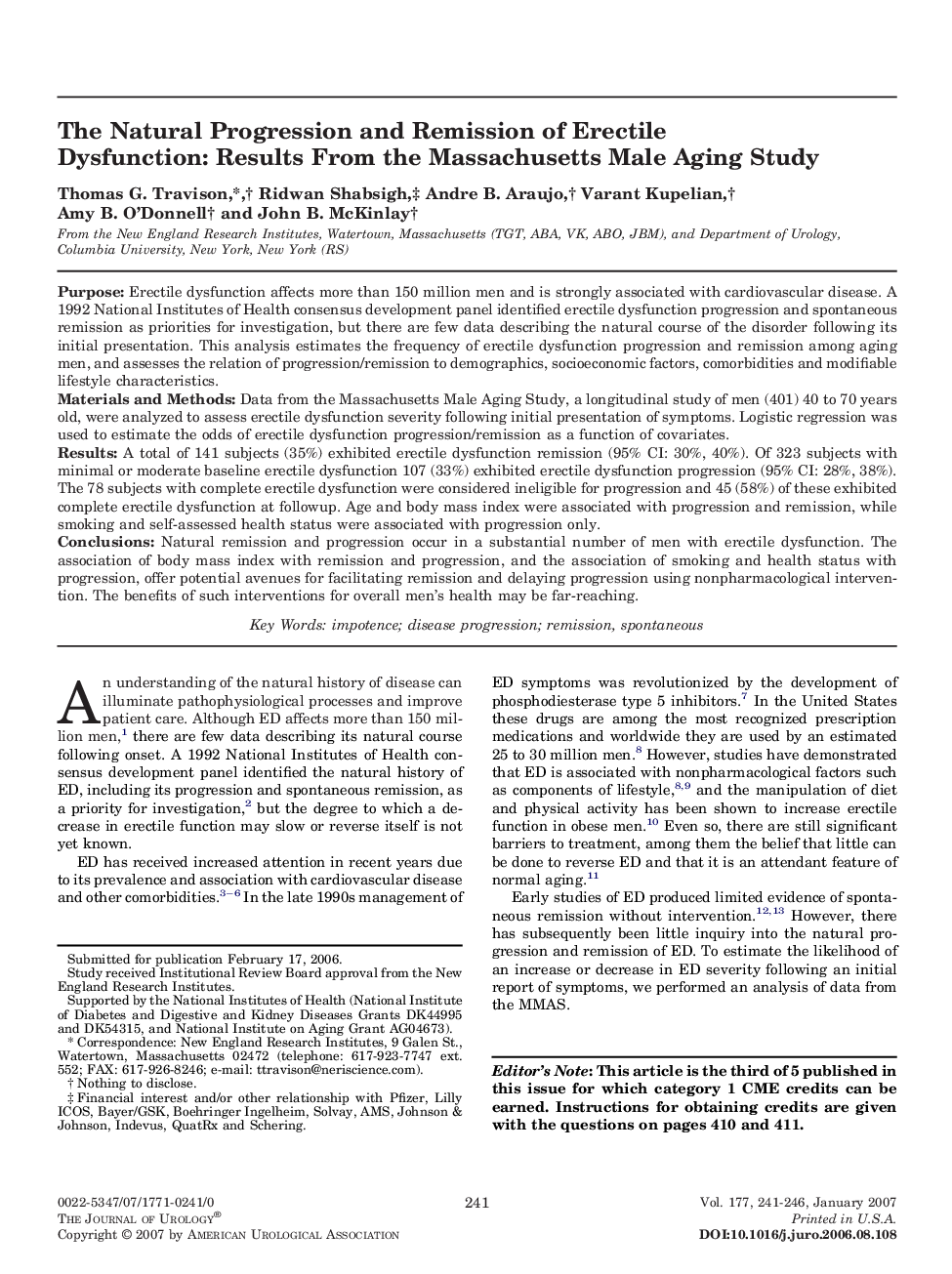| Article ID | Journal | Published Year | Pages | File Type |
|---|---|---|---|---|
| 3879680 | The Journal of Urology | 2007 | 6 Pages |
PurposeErectile dysfunction affects more than 150 million men and is strongly associated with cardiovascular disease. A 1992 National Institutes of Health consensus development panel identified erectile dysfunction progression and spontaneous remission as priorities for investigation, but there are few data describing the natural course of the disorder following its initial presentation. This analysis estimates the frequency of erectile dysfunction progression and remission among aging men, and assesses the relation of progression/remission to demographics, socioeconomic factors, comorbidities and modifiable lifestyle characteristics.Materials and MethodsData from the Massachusetts Male Aging Study, a longitudinal study of men (401) 40 to 70 years old, were analyzed to assess erectile dysfunction severity following initial presentation of symptoms. Logistic regression was used to estimate the odds of erectile dysfunction progression/remission as a function of covariates.ResultsA total of 141 subjects (35%) exhibited erectile dysfunction remission (95% CI: 30%, 40%). Of 323 subjects with minimal or moderate baseline erectile dysfunction 107 (33%) exhibited erectile dysfunction progression (95% CI: 28%, 38%). The 78 subjects with complete erectile dysfunction were considered ineligible for progression and 45 (58%) of these exhibited complete erectile dysfunction at followup. Age and body mass index were associated with progression and remission, while smoking and self-assessed health status were associated with progression only.ConclusionsNatural remission and progression occur in a substantial number of men with erectile dysfunction. The association of body mass index with remission and progression, and the association of smoking and health status with progression, offer potential avenues for facilitating remission and delaying progression using nonpharmacological intervention. The benefits of such interventions for overall men’s health may be far-reaching.
